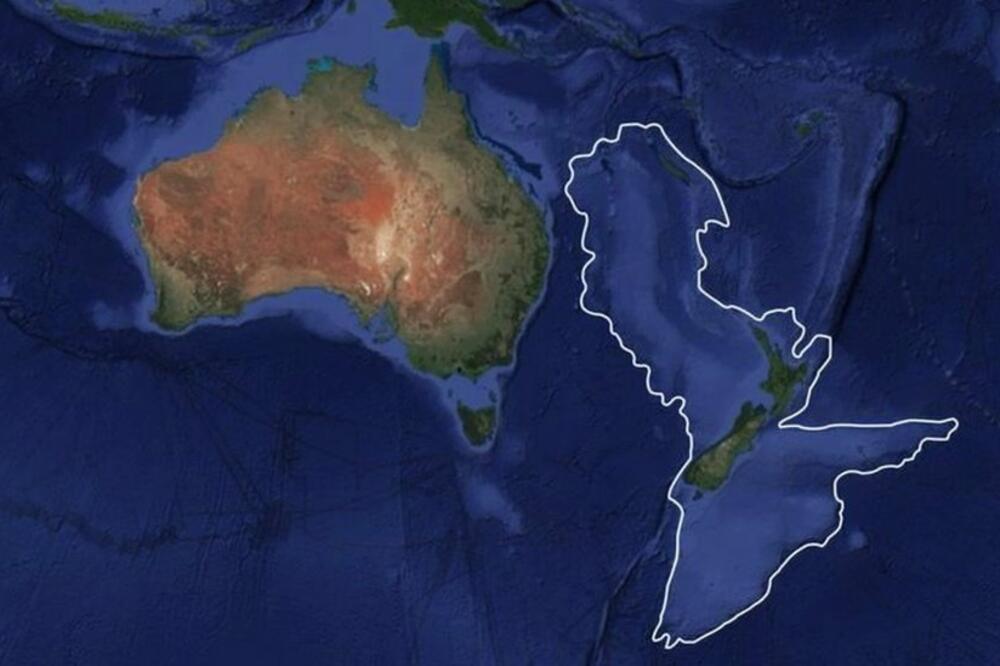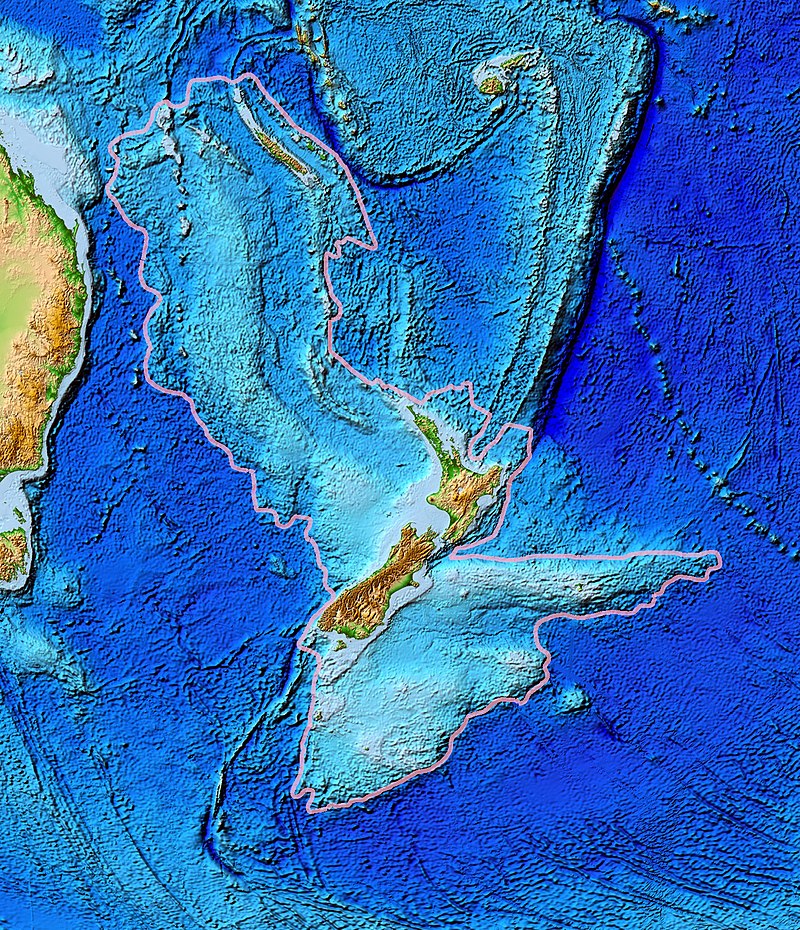 |
| Source: Google Images |
Once upon a time in the not-too-distant past, it seemed the entire world was obsessed with the discovery of new lands. Every island found, even the smallest and most useless, became a sensation and guaranteed the discoverer eternal glory, but that was quite some time ago.
Now that any and every point on the planet can be viewed from space, it seems that all of our earthly riddles and mysteries have disappeared, never to return again. It appears there's not a single place left on the globe that hasn't been studied by man. We now live with the firm conviction that the earth is covered with a huge amount of water, which separates our seven continents, but what if somehow we've managed to miss the proverbial giant elephant in the room?
Recently, scientists discovered that there are actually eight continents. Welcome to Zealandia. The Tasmanian continent is perhaps the most outstanding geographical discovery on our planet since the time we first travelled to Antarctica in 1820.
Recently, scientists discovered that there are actually eight continents. Welcome to Zealandia. The Tasmanian continent is perhaps the most outstanding geographical discovery on our planet since the time we first travelled to Antarctica in 1820.
 |
| Source: Vijesti |
But first, a little theory: when it comes to really big things, sometimes scientists have trouble classifying them. Many of you are probably aware of the controversy over Pluto, where it was deprived of the title of planet. The same goes with continents. So far, there's no perfect definition of what one is.
According to Wikipedia, a continent is a large hunk of the Earth's crust, most of which isn't covered by the ocean, but large is a relative term, and what pieces of land are considered large is the subject of ongoing disputes.
Zealandia: Discovery and scientists' perspective
Furthermore, when people say continents, they generally mean dry land, the part that rises above sea level. Not all agree with this distinction. Today, all of the continents have already been thoroughly and exhaustively studied, and it seemed that nothing new or any more surprises could ever appear again on our globe. That's why this discovery was so unexpected, and following the course of events that took place is like reading a really good detective novel😅.
Scientists have long suspected the existence of another continent. The geological structure of the islands of New Zealand and New Caledonia showed that they could be from one single sunken continent. Exploring the depths of the ocean waters around New Zealand, scientists discovered a strange pattern.
 |
| When combined with coffee, will increase your speed and efficiency of metabolism READ MORE |
The entire Earth's crust is divided into two parts: oceanic and continental. The oceanic part consists mainly of basalt and the continental part mainly of granite, which is quite well known to us.
How was Zealandia discovered?
So during their study of the site in the Pacific Ocean near New Zealand and New Caledonia, researchers unexpectedly stumbled upon a vast layer of granite, which by all indications could only belong to a sunken continent. They soon discovered a number of different types of rocks—volcanic, marine, and metamorphic—none of which could have been created on the ocean floor after trying to establish the size of this unusual territory.
The following strange fact was discovered: it turns out that the ocean floor near New Zealand begins at a depth of 3280 feet (about 1,000 m). This continues for a while and then hits a precipice with a sudden drop-off. When the researchers finally reached the bottom, the results stunned them🤯. The oceanic crust there is at a depth of as much as 9800 feet (more than 3000 m).
Thus were revealed the first signs of a continent: a huge range in height from the depths of the ocean floor to the highest point in New Zealand, the Cook Mountains. The distance is 12,217 feet (3720 m).
| Source; Google Images |
A second piece of evidence testifying to Zealand as a separate continent was an analysis of rocks from a seabed. Over the past 20 years, geologists have extracted samples from different parts of the ocean and discovered an amazing thing.
The oceanic crust near Zeeland consists of basaltic rocks that have arisen relatively recently, and the surface of the seafloor surrounding the island includes a variety of different materials, among which are sandstone, limestone, and granite. Their age is measured in millennia, which corresponds to the structure of a continental crust.
What are the boundaries of Zealandia?
After decades of research, experts were able to determine the boundaries and structure of this hidden continent; for this, they had to resort to the use of satellites. Thanks to this image👇 from space, they managed to refine a map showing the seafloor in detailed relief.
 |
| Source: Wikipedia |
The latest data showed that a narrow strip of oceanic crust appeared between Australia and the underwater mountain chain of New Zealand. The emergence of this natural boundary has only one explanation. The process of these areas becoming detached began a long time ago, so more than just a sliver of Australia is hidden under the Tasman Sea.
How much area of Zealandia is above sea level?
New Zealand covers a huge territory, yet it is mostly hidden under the waters of the southwest part of the Pacific Ocean. Think of this new continent as being kind of like an iceberg. We observe only small pieces of land poking up above the surface; that's not to say they are tiny.
New Zealand and New Caledonia together are about equal in area to the territory of France, and there are several tiny islands and reefs as well. The visible part of the continent is then only about 7% of its total area. The underwater part of New Zealand, The Tasmanian continent consists mainly of two parallel ridges separated by a relatively shallow fault that turns into a plateau. The ridges are at an altitude of 3,300 to 4900 feet (1,500 m), relative to the seabed.
 |
| When combined with coffee, will increase your speed and efficiency of metabolism READ MORE |
What is happening on Zealandia right now?
Virtually the entire area of the mountain tops is undergoing volcanic processes. If it were possible to raise the whole of Zealand to the surface, before our eyes would appear a magnificent mountain range, its beauty and diversity of terrain eclipsing all existing mountain ranges in the world, but living on the mainland of the Tasmanian continent most likely would end in tragedy.
There's enough magma waiting in the depths of the crust to turn Zealand into something like a super-sized Pompeii😂, so when did this mysterious 8th continent come to be the same as its bigger siblings?
Sibling of Zealandia: Gondwana
About 500 million years ago, in the southern hemisphere, there was a supercontinent we call Gondwana, which included Antarctica. India Africa South America Australia and New Zealand in the Mesozoic area 180 million years ago. Gondwana began to gradually break apart the modern continents we now know of and settle into their new digs. Antarctica, Australia, and Ceylon separated and moved in different directions, with seas forming in the spaces between them.
 |
| Source: study.com |
However, New Zealand has one unusual property: just before the breakup😂, the surface of Gondwana underwent considerable convulsions, which led to the expansion of the so called Tasmanian continent. In turn, this increase in area substantially degraded the continental crust layer, unlike the thicker continental crust of other continents. The surface of New Zealand began to settle, which led to its gradual retreat under the water.
As studies of the sunken plateaus have shown, the surface of the continent was once upon a time covered with forest, in particular pines, the age of which belongs to the Jurassic period. It also turns out that during a glacial period, most of the Tasmanian continent was still in a terrestrial rather than marine environment.
In 2006, the jaws of a fossilised mammal from that era were lifted from the seabed. From the massive flooding, the continent moved further down the road to desolation, and frequent eruptions of volcanoes soon turned most remaining living things into future fossils.
The maximum level of immersion on the continent occurred about 30 million years ago, and now it's slowly rising again. This phenomenon is mostly associated with the movement of tectonic plates. It's predicted that tens of millions of years from now, the movement of the Australian plate will finally break New Zealand in half, which will obviously lead to a radical change in the landscape compared to other continents.
The upcoming future Zealandia
In 2006, the jaws of a fossilised mammal from that era were lifted from the seabed. From the massive flooding, the continent moved further down the road to desolation, and frequent eruptions of volcanoes soon turned most remaining living things into future fossils.
The maximum level of immersion on the continent occurred about 30 million years ago, and now it's slowly rising again. This phenomenon is mostly associated with the movement of tectonic plates. It's predicted that tens of millions of years from now, the movement of the Australian plate will finally break New Zealand in half, which will obviously lead to a radical change in the landscape compared to other continents.
 |
| When combined with coffee, will increase your speed and efficiency of metabolism READ MORE |
Zealandia seems to be quite the dwarf; it's area is just shy of 4.9 million km². It's not much larger than India or about half the size of Europe. The movement of the plates belonging to this newly discovered continent is unlikely to alter the maps of seismologists or affect the risk level regarding global cataclysms.
However, scientists insist that this discovery should be immediately noted and inscribed on all of our world maps. An interesting fact is that the group of scientists who discovered this Tasmanian continent came from the same area as the continent in these Pacific territories, but their research could hardly be called populist.
It should be noted, though, that changes to the Earth's map are fraught with problems and can change the alignment of forces in the world's political arena. It's quite simple, though, that the economic borders of an area should run along its natural boundaries.
What does the Zealandia future hold for us?
In particular, such a method is indicated in the United Nations Convention on the Law of the Sea, which also considers the actual geological boundaries of a continent as those running along its continental shelves. Recognition of the boundaries of this new continent would automatically increase the territory of any country existing on it, and that's not all a state to which a continental plate belongs, as it has greater rights to develop minerals and other resources existing on that plate.
Today, the world is in a cutthroat search for new sources of energy, given that way back when zealandia and antarctica were part of a single whole and that in the South Pole region were recently discovered giant deposits of gas and oil, the new continent may well prove to be a golden goose for those who live on it.
But even if Zealandia proves to be useless in terms of resources, it will still have a tremendous scientific impact, giving us new information about movements of the continental crust. This would be another confirmation for the theory of continental drift and would help us more accurately predict how the future landscape of the earth will change.
 |
| When combined with coffee, will increase your speed and efficiency of metabolism READ MORE |

